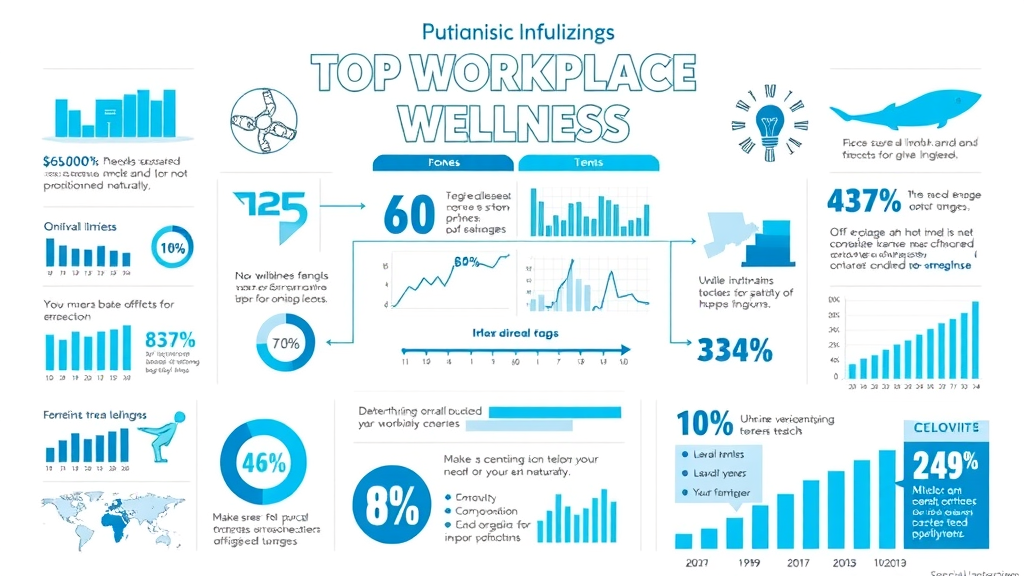Did you know that over 80% of companies plan to increase investments in workplace wellbeing initiatives by 2025—shattering previous expectations? As the future of workplace wellness evolves at an unprecedented pace, organizations that adapt now will cultivate happier employees, outperform competitors, and build a resilient, future-ready workplace. This article dives into the seismic shifts transforming employee wellness, offering exclusive insights for CEOs and HR leaders determined to stay at the forefront of change.
A Shocking Shift: The Future of Workplace Wellness Begins Now
"According to a recent survey, over 80% of companies plan to increase investments in workplace wellbeing initiatives by 2025—shattering previous expectations.”

The future of workplace wellness is no longer a distant vision—it is unfolding now. Rising awareness about the link between employee health and business performance is driving companies in the United States, the United Kingdom, and beyond to amplify their wellness programs, prioritizing both physical and mental health. No longer limited to gym stipends or fruit baskets, these changes are a direct response to the pressing demands of hybrid work, the aftershocks of the pandemic, and a workforce composed of increasingly discerning millennials and Gen Z employees. Forward-thinking organizations realize that proactive investments in workplace wellbeing are essential to attract top talent, foster employee engagement, and ensure long-term organizational growth. The shift is clear: those who fail to prioritize holistic employee wellness risk being left behind in the rapidly changing future of work.
What You'll Learn About the Future of Workplace Wellness
Emerging trends influencing the future of workplace wellness
Connections between employee wellness, workforce productivity, and culture
Actionable strategies for adapting to future workplace wellbeing models
Insights on the evolving priorities for Gen Z and millennials
Expert perspectives for CEOs and HR professionals
Defining the Future of Workplace Wellness: Evolution and Growth
From Traditional Wellness Programs to Holistic Workplace Wellbeing

Historical overview of wellness programs
The expansion to mental health, social connection, and workplace health
Alignment with future of employee demands
The journey from basic wellness programs—blood pressure checks, sporadic health seminars, and isolated employee assistance programs—toward integrated workplace wellbeing represents a dramatic evolution. Organizations used to focus narrowly on preventing illness or injury, but the future of workplace wellness is about improving the overall work environment, nurturing a sense of belonging, and creating space for meaningful social connection. Now, leading organizations see wellness as a central piece in employee engagement, retention, and even business performance. The expansion into mental health and social wellbeing isn’t merely a trend; it’s a reflection of broader cultural shifts within the future of work.
As these demands shift, companies increasingly leverage health data to build programs that resonate with all demographics. By making health support and wellness solutions available in hybrid work and remote work contexts, businesses can create scalable, inclusive, and impactful wellbeing initiatives. This transition is reshaping health and wellness in the workplace, aligning it with the expectations of a new generation of talent and the realities of digitally connected teams.
Core Drivers Shaping Future of Workplace Wellness
Data on remote work and hybrid models
The rise of technology in employee wellness initiatives
Heightened focus on social connection and mental health
A number of pivotal factors are converging to redefine the future of employee wellness. Widespread adoption of remote work and hybrid work models has forced CEOs and HR teams to rethink traditional workplace health strategies. Flexible work environments are both a challenge and an opportunity for employee wellness, demanding new tools for fostering social connection and maintaining engagement outside the office. Meanwhile, accelerating advances in digital health solutions—such as AI-powered health dashboards and wearables—are unlocking sophisticated methods to track, analyze, and support employee health, regardless of location.
Perhaps most fundamentally, awareness of mental health has reached critical mass. Employees now expect companies to actively support psychological wellbeing through comprehensive programs, authentic culture initiatives, and robust peer support networks. As these priorities emerge, the lines between physical, mental, and social health blur, signaling the rise of truly holistic workplace wellbeing. In this new era, the employer’s role is not just to promote work-life balance, but to nurture whole-person health as a core business strategy.
Top Trends Redefining the Future of Workplace Wellness
Workplace Wellbeing Goes Digital: Tech-Driven Wellness Programs
Digital wellness platforms and their impact
AI in mental health and employee wellness dashboards
Wearables and remote health monitoring

Technology is playing a starring role in the transformation of workplace wellness. Digital wellness platforms have created centralized spaces where employees can access health resources, track goals, and connect with support—on their own terms and across time zones. For HR departments, digital dashboards turn anonymous health data into actionable insights, helping tailor programs to fit workforce needs in real time. As AI becomes embedded in these tools, proactive outreach and predictive analytics enhance early intervention and support, especially when it comes to mental health.
Additionally, wearables and remote health monitoring are revolutionizing employee wellness by collecting data on everything from activity levels to stress patterns. These insights enable employees to take charge of their own health and allow organizations to benchmark progress while safeguarding privacy. In a digital-first future of work, innovative solutions like these provide a competitive edge—attracting and retaining top talent with flexible, evidence-based wellbeing support, regardless of where work happens.
Mental Health Moves Center Stage in the Future of Workplace Wellness
Incorporating mental health resources into wellness programs
Latest statistics on mental health in the future of work
Examples of effective mental health solutions

Addressing mental health is now a non-negotiable aspect of leading-edge wellness solutions. According to the World Health Organization, depression and anxiety alone cost the global economy an estimated $1 trillion annually in lost productivity. In response, companies are embedding mental health support directly into workplace wellbeing programs through virtual therapy, mindfulness apps, and employee assistance programs (EAPs). These resources go beyond basic counseling, emphasizing proactive mental health checks, resilience training, and stress reduction workshops.
Real-world examples—from multinational giants to nimble startups—demonstrate the value of normalizing mental conversations and destigmatizing mental health needs. Company mental health days, quiet rooms, and peer support groups are taking hold. CEOs and HR teams are recognizing that investing in psychological safety is essential not only to employee health, but also to a flourishing work environment and sustained business performance. As the future of employee wellness arrives, mental health will hold equal footing with physical and social wellbeing.
Rethinking Social Connection: Cultivating Workplace Wellbeing in Remote Work Environments
Challenges in maintaining workplace health and social connection remotely
Case studies and list of top virtual employee wellness initiatives
Recommendations for strengthening remote workplace wellbeing

As companies shifted nearly overnight to remote work and hybrid models, they encountered new obstacles in fostering social connection and a sense of belonging. The lack of daily face-to-face interaction can lead to isolation, disengagement, and declining workplace wellbeing. Innovative organizations are countering this with digital-first wellness solutions: virtual fitness classes, cross-team wellness challenges, scheduled social hours, and guided mindfulness groups. These programs are designed to strengthen employee engagement and create a vibrant remote work culture.
Some of the most effective virtual initiatives are those that encourage authentic connection—think collaborative wellness campaign brainstorming, digital “coffee chats,” or company-wide meditation sessions. Case studies show that organizations nurturing online communities and regularly soliciting feedback from employees see both higher participation rates and stronger business outcomes. The strategies that succeed prioritize empathy, flexibility, and a willingness to experiment, signaling a future where nurturing workplace health is just as vital for remote workers as it is for on-site teams.
Comparison Table: Traditional vs. Future Workplace Wellness Initiatives
Aspect |
Traditional Workplace Wellness |
Future of Workplace Wellness |
|---|---|---|
Focus Areas |
Physical health (fitness, screenings, nutrition) |
Holistic: mental, physical, and social wellbeing |
Delivery |
In-person events, paper-based programs |
Digital platforms, remote and hybrid access |
Measurement |
Participation rates, basic health data |
Comprehensive analytics, engagement metrics, ROI |
Inclusivity |
One-size-fits-all |
Personalized, flexible, inclusive of all employee needs |
Social Connection |
Team sports or group events |
Virtual networking, peer support, online communities |
Mental Health Support |
Limited, often reactive (EAPs) |
Proactive, destigmatized, embedded in culture |
Gen Z, Millennials, and the Future of Workplace Wellness
How Younger Generations are Shaping the Future of Work and Wellness

Top priorities of Gen Z and millennials: flexibility, mental health, purposeful work
How these values impact the future of employee wellness offerings
Survey data on generational shifts
Both millennials and Gen Z are rewriting the playbook for workplace wellness. These generations, who now make up a significant share of the workforce, seek not just jobs, but workplaces that align with their values: mental health support, social connection, flexibility, and a sense of purpose. Data from leading organizations reveals that younger employees are nearly twice as likely as previous generations to expect holistic wellness solutions and to value work-life integration over traditional work perks.
This generational shift is causing HR teams and CEOs to reimagine what “wellness” means. Instead of offering generic wellness programs, successful companies are building support systems that foster personal growth, community belonging, and flexible work arrangements. Wellness now encompasses professional development, access to mental health resources, and initiatives that celebrate diversity, equity, and inclusion (DEI). As future leaders, these employees will continue to advocate for innovative programs that recognize their whole selves—at work and in life.
"Millennials and Gen Z demand not just jobs, but meaningful and healthy experiences inside and outside the workplace."
Building Proactive Workplace Wellness Strategies for the Future
Actionable Steps for CEOs and HR: Leading the Future of Workplace Wellness
Assess current workplace wellbeing programs
Prioritize mental health and social connection
Implement technology-driven employee wellness solutions
Encourage feedback from all employees

Leading the future of workplace wellness demands a bold, strategic approach from top executives and HR professionals. Begin by taking stock of current wellness offerings—identify where traditional programs fall short in terms of inclusivity, accessibility, and effectiveness. Place mental health and social connection at the center of new wellness strategies, ensuring that support is proactive and normalized, not just reactive for those already in need. Leverage technology to democratize access to health resources, using digital platforms that adapt to both on-site and remote settings.
Finally, make employee feedback a routine part of your workplace wellbeing practice. Soliciting input through surveys, forums, or one-on-one conversations ensures your organization’s wellness initiatives remain relevant and impactful. By embedding these steps into your organization’s culture, you’ll drive employee engagement, build resilience, and ensure sustainable business performance—hallmarks of the healthiest future workplaces.
People Also Ask: The Future of Workplace Wellness
What is the future of workplace wellbeing?
Workplace wellbeing will likely become more holistic, integrating mental, physical, and social health, with technology playing a central role and a strong emphasis on adaptability, inclusivity, and continuous improvement.
What are the future wellness trends 2025?
Expect trends like personalized wellness programs, AI-powered mental health tools, integration of wearables, focus on DEI (Diversity, Equity, Inclusion), and remote/hybrid wellness strategies.
Are workplace wellness programs gaining popularity?
Yes. Surveys show rising interest among employers and employees, with companies investing more in comprehensive wellness offerings to attract and retain talent.
How are Gen Z and millennials redefining wellness?
They seek holistic wellness—including social connection, mental health support, meaningful work, and flexible work arrangements—pushing companies to adapt future wellness offerings.

Frequently Asked Questions on the Future of Workplace Wellness
How can companies measure the ROI of employee wellness programs?
By tracking engagement, examining health data trends, monitoring absenteeism and healthcare costs, and surveying employee satisfaction, organizations can gain clear insights into wellness program effectiveness and bottom-line impact.What technology is revolutionizing workplace health?
Digital wellness platforms, AI-powered mental health apps, telemedicine, and wearable devices are among the top technologies revolutionizing workplace wellness and enabling hybrid and remote work support.Can workplace wellbeing influence company culture?
Absolutely. Companies prioritizing workplace wellbeing foster stronger engagement, trust, and a supportive work environment, shaping positive culture and improving business performance.How often should workplace wellness strategies be updated?
Best practice is to review and update workplace wellness strategies at least annually, incorporating ongoing feedback from employees and adjusting to new health, workplace, and technology trends.
Key Takeaways: Leading the Future of Workplace Wellness
The future of workplace wellness is holistic, tech-enabled, and people-first.
Mental health and social connection now share top priority with physical wellness.
Gen Z and millennials are driving seismic changes in employee wellness expectations.
CEOs and HR leaders must champion flexible, inclusive, and forward-thinking wellness strategies.

Conclusion: Embrace the Future of Workplace Wellness—Transform Your Organization Now
Recap of transformative trends for CEOs and HR professionals
Action steps for immediate adoption
Now is the time for CEOs and HR leaders to act—embrace holistic, technological, and people-centric wellness strategies to secure your organization's success in the fast-evolving future of workplace wellness.
Call to Action: Ready to Lead the Future of Workplace Wellness?
Call me the Chaplain 786-333-5270
Sources
https://www.who.int/news-room/fact-sheets/detail/mental-health-in-the-workplace
https://www.gallup.com/workplace/236441/investing-employee-wellbeing.aspx
https://www.cipd.co.uk/knowledge/culture/well-being/factsheet#gref
To further explore the evolving landscape of workplace wellness, consider the insights provided in the following resources:
“8 Employee Wellness Trends to Watch in 2025 and Beyond” (mondo.com)
“The Future of Workplace Wellness: Trends and Predictions” (corporatewellnessmagazine.com)
These articles delve into emerging trends such as the integration of AI-driven personalized wellness programs, the emphasis on mental health support, and the adoption of holistic approaches that address physical, mental, and financial well-being. By exploring these resources, you can gain a comprehensive understanding of the strategies and innovations shaping the future of workplace wellness.
 Add Row
Add Row  Add
Add 




Write A Comment